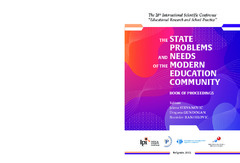Приказ основних података о документу
Structuring lessons or structuring knowledge – what does it tell us about the teaching practice?
| dc.contributor | Stevanović, Jelena | |
| dc.contributor | Gundogan, Dragana | |
| dc.contributor | Ranđelović, Branislav | |
| dc.creator | Milin, Vladeta | |
| dc.date.accessioned | 2023-10-05T15:03:48Z | |
| dc.date.available | 2023-10-05T15:03:48Z | |
| dc.date.issued | 2022 | |
| dc.identifier.isbn | 978-86-7447-161-6 | |
| dc.identifier.uri | http://ipir.ipisr.org.rs/handle/123456789/966 | |
| dc.description.abstract | Practically all didactic textbooks and manuals more or less explicitly emphasize the importance of structuring in teaching. Authors often stress that teachers should begin the lesson with an overview, gradually present the material, and repeat the most important parts of the lesson at the end of the lecture (Trnavac & Đorđević, 2010; Vilotijević, 1999). These procedures mainly pertain to the organization of teaching activities, and we refer to them as structuring lessons. In literature, there are also recommendations regarding students linking the current topic with previously processed content, students connecting the content with topics addressed in other teaching subjects, and so forth (Pešikan, 2001; Šefer, 1991). This form of structuring could be labeled as structuring knowledge. Some papers have presented these two forms of structuring conjointly, within one single concept (Creemers & Kyriakides, 2008). On the other hand, these types of structuring could be perceived as manifestations of two quite distinct didactical approaches. Structuring lessons implies the expectation that the teacher would lead, manage, and control the teaching practice. Therefore, structuring lessons corresponds to adult-run practice (Rogoff, 1996) or traditional or transmissive education (Ivić,Pešikan & Antić, 2001; Havelka, 2000). Conversely, structuring knowledge reflects an orientation toward students, i.e., the development of their cognitive processes and intellectual capabilities. This approach could be viewed as a manifestation of a childcentered approach (Sugrue, 2002) or constructivist teaching/constructivist learning in class (Mirkov, 2013; Vilotijević, 1999). The aim of this study was to investigate whether both forms of structuring were equally represented in the teaching practice in Serbia or whether one of them was predominant (and if so, which one). The significance of the results lies in their usefulness in discovering the predominant teacher orientation. Therefore, this paper implicitly addresses the more general question of whether the education practice in Serbia focuses on the activities of teachers (structuring lessons), student learning (structuring knowledge), or both two forms of structuring equally. | sr |
| dc.language.iso | en | sr |
| dc.publisher | Belgrade : Institute for Educational Research | sr |
| dc.relation | info:eu-repo/grantAgreement/MESTD/inst-2020/200163/RS// | sr |
| dc.rights | openAccess | sr |
| dc.source | The state, problems, and needs of the modern education community | sr |
| dc.subject | structuring lessons | sr |
| dc.subject | structuring knowledge | sr |
| dc.subject | teaching practice | sr |
| dc.subject | conceptions of education | sr |
| dc.subject | elementary schools in Serbia | sr |
| dc.title | Structuring lessons or structuring knowledge – what does it tell us about the teaching practice? | sr |
| dc.type | conferenceObject | sr |
| dc.rights.license | ARR | sr |
| dc.citation.epage | 70 | |
| dc.citation.spage | 65 | |
| dc.description.other | Book of proceedings: 28th International Scientific Conference “Educational Research and School Practice”, December 9th , 2022 Belgrade” | sr |
| dc.identifier.fulltext | http://ipir.ipisr.org.rs/bitstream/id/3013/Structuring_lessons_or_structuring_knowledge_what_does_it_tell_us_about_the_teaching_practice_2022.pdf | |
| dc.identifier.rcub | https://hdl.handle.net/21.15107/rcub_ipir_966 | |
| dc.type.version | publishedVersion | sr |

